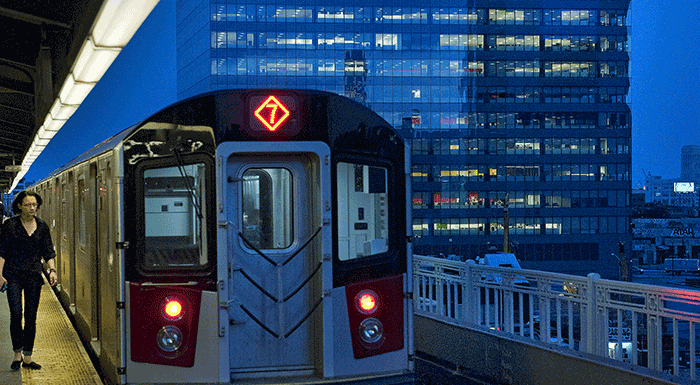Photo Courtesy of Patrick Cashin/MTA New York City Transit
Queens subway stations had the largest share of structural components in disrepair in 2017.
By Michael V. Cusenza
Subway stations in Queens had the largest share of worn or damaged structural components in 2017 (44 percent), according to an analysis of Metropolitan Transportation Authority data by State Comptroller Tom DiNapoli.
Additionally, DiNapoli reported Friday, at the borough’s most heavily used station (Main Street on the No. 7 line) 45 percent of the structural components were worn or damaged.
According to the comptroller, the overall number of repairs needed in New York City’s subway stations has increased, leaving fewer stations in good condition as the system has deteriorated faster than the pace of repairs.
According to the analysis, MTA New York City Transit surveys stations every five years, looking at structural components (e.g. stairs, platforms, ventilators) and architectural components (e.g. tiles, lighting, walls and ceilings), and rating their condition from 1.0 to 5.0. Under 3.0 is considered in good repair and 3.0 and over are worn or damaged. Serious conditions are rated 4.0 or higher. The MTA recently completed its latest survey, which is based on 2017 observations. DiNapoli’s analysis is based on that survey.
Of the nearly 15,500 subway station structural components, the 2017 Transit survey found that 29 percent were worn or damaged, up from 27 percent in 2012. A significant concern is the deterioration in platform edges, which are important to rider safety. A decade ago, Transit made a concerted effort to fix crumbling platform edges after several passengers fell onto the tracks, but the share of edges in need of repair has grown. The latest survey found that 65 percent of platform edges were worn or damaged, up from 43 percent in 2012 (57 percent needed repair in 2007). The number with serious problems (11 percent) went virtually unchanged from 2012 to 2017.
One-third of all stations (158) had serious structural deficiencies (those rated 4.0 or higher) in 2017, down from 188 in 2012. Transit reduced the total number of serious structural deficiencies at all stations by 25 percent between 2012 and 2017 to 474 structural components. The overall number of serious architectural defects was reduced by 89 percent. Despite these efforts, the total number of structural defects (rated 3.0 and above) increased by 8 percent, to 4,491. In addition, only 26 of the 471 stations surveyed (5.5 percent) had all of their structural and architectural components in good repair, half as many as in 2012.
While Queens had the largest share of structural components in disrepair, the borough also had more stations in good repair than five years earlier. NYCT reported that all of the structural components in 12 of 81 stations were in good repair, up from 1 in 2012.
“The rising number of potentially hazardous worn or damaged platform edges is particularly troubling,” DiNapoli said. “On the plus side, the MTA has been able to reduce the number of the most serious station defects, but a lot more needs to be done to address declining station conditions. It is up to the MTA to prioritize its limited resources to ensure its next capital program improves service and conditions for riders.”

